API eh... Home Assistant could probably help triggering the on-board LED through the API.I have found a way to "hack it" using BI to have another camera's trigger turn on the lights of the 4K-T via API
Worlds First Review - Dahua DH-IPC-HDW5849H-ASE-LED / IPC-Color4K-T - 2.8mm Turret
- Thread starter Wildcat_1
- Start date
You are using an out of date browser. It may not display this or other websites correctly.
You should upgrade or use an alternative browser.
You should upgrade or use an alternative browser.
Make it so Number 1API eh... Home Assistant could probably help triggering the on-board LED through the API.
I think you will be fine with the LEDs, I don't even know if I have any Incandescent bulbs left anymore. It was just a slight difference I noticed. Now, a bit older, these old eyes probably could not tell a difference.Thanks for the feedback, nice to see an active place
We have some new house lights and the clear LED bulbs are 3000k warm lights, maybe that will help with the blue issue you have?
Thanks for the input. Lots to think about, I'll be back haha!
I will add, when I first setup my CAMs, I was focused wrong in thinking I wanted 30 FPS, video production quality, but with the help of the great guys on this Forum I switched my thinking to that these are Security Cameras, not trying to make a movie out of the footages. I dropped my FPS to 15 and treated them as the cameras they are suppose to be, with the right settings. It made a huge difference in my playback videos...the key is to cap that crisp image/footage of the person of interest. People are not just standing around to give you that perfect shot, so in movement it is important to have the right settings. As @wittaj and others here preach, having a higher Res. won't give you a better cap in a moving object, especially at night. Hope I said that right
tigerwillow1
Known around here
I do this with a T180, which I believe has the same API as the 4K-T. The command to turn the LEDs on and off is:I have found a way to "hack it" using BI to have another camera's trigger turn on the lights of the 4K-T via API
(Modes are Off, Manual, Auto)
Select Manual to turn LEDs on, Off to shut them off (doh!).
This works only when the Night profile is running. The [1] subscript selects the Night profile. I use Manual to turn the lights on, but I guess Auto would work too. With manual it uses whatever brightness is set with the camera UI.
I have another camera using IR that overlaps the T180s FOV. BI is set up so when the other camera is triggered, it turns on the T180's lights, then turns them off after a minute.
CCTVCam
Known around here
- Sep 25, 2017
- 3,076
- 3,986
Thanks for the feedback, nice to see an active place
I'll be mounting at a similar height. 8-10ft I think should be okay. The pics others are sharing do look amazing and is why I'm split between.
hmm... I guess if they get further onto the property I'll be able to ID eventually when they get within 25ft which counting for the angle is probably halfway up the drive maybe a bit less.
I guess if they're under the camera you don't get much anyway, plus the other camera opposite it should pick them up and be far enough away the image is in focus.
Yeah, trying to stay away from adding more cam's and making the house look suspicious haha. But I guess that's part of the tough decision, B/W isn't our ideal but if it gets way better detail thats a bonus except for color helping with ID maybe?
We have some new house lights and the clear LED bulbs are 3000k warm lights, maybe that will help with the blue issue you have?
Definately second on my list too, just be nice to have a camera that has a good image of wildlife etc. on the street to share not to ID. We had a couple coyote's pass the other night the neighbour got a nice shot from their cam (it was their house afterall) but our crappy Wyze v3pro cam was way too dark and smudgy to want to share with them. It was ~100ft away at night.
See I like the idea of crisp B/W with IR but worried I'd miss the higher resolution during the day and the color night vision using house lights. Ideally I wouldn't use the built-in LED on the 4K.
Thanks for the input. Lots to think about, I'll be back haha!
You don't need to go that high unless you want to. My cameras are at about 6ft 6 inches. Maybe the lowest on here? Its very rare cameras are ever attacked on residential properties and if they were, they'd have to walk up close to the lens 1st which means you'll almost certainly get a good facial picture from a low mounted camera unless they have a very very solid disguise in which case you'd get no facial pic irrespective of height. The hgiher you go, the harder it is to get a good facial pic and the more items such as caps prevent capture of a good image.
So far as the distance protected is concerned, you need to match the camera to the distance. There isn't a camera that will cover 0-40 feet in perfect sharpness throughout. All cameras have a focal point and the picture softens in front and behind of that point. The focal details are usually in the spec sheet, although many on here have found these not that accurate, so it's worth looking to see if the model you're looking at has been tested then look at the tests to see at what distances eg text is readable and faces remain clear. This will give a guide. The focus point will change with lens eg a 5442 on a 2,8mm lens will not focus at the same distance as the 3.6mm model.
The other question to ask yourself is what you're trying to protect because it's that object you ideally want at the focus point. It's all right saying you want to have a sharp picture of people coming onto your property 40 feet away. But if the item you're trying to protect is a door that's 6 feet from the camera, the picture could be burry by the door if the image is sharp at 40ft and at 40ft you might not be able to identify the person. Protect the valuable item not the boundary. A camera protecting a door 6 foot away will still show a person coming onto the property albeit they might not be identifiable at that distance, but most importantly it will capture a sharp image of them breaking into the door which is what you need to identify them and prove the crime.
If you want to protect items at different distances eg a door at 6 feet and a vehicle on the street at 40 feet, then you probably need 2 cameras with 1 dedicated to each, most least of which is because unlike on CSI programs, you can't zoom into a picture after the event and get a clear image. The clarity and sharpess of the image is the result of the pixel density. The more you zoom in, the more you lower the pixel density as you enalrge that section of the image, and the more blurred the image becomes. A clear image of someone at 40 feet taken on a wide angle will have them too small to be identified. However, zoom into that sharp picture and by the time you've made them large enough to identify, they will be a soft and blurry pixel mess than you can't even recognise nevermind identify. The other consideration is a longer focal length ie a zoomed lens, has a narrower field of view. So a lens that's focused at 40 feet which might eg be an 8 or 12mm (I'm not sure off the top), will have a very narrow field of view and thus won't protect much of the area close up and people can probably walk up to or by the camera without ever being captured by it. A wide angle lens that captures everything close up won't have the pixel density at long range to get an acceptable image. Thus if you need a perfect picture at 2 different distances you may be looking at using 2 cameras and not one. Hence why many on here with those requirements use an over view camera to capture the wide view and then a narrower more zoomed camera to protect a specific object, or simply 2 cameras to protect at 2 distances if 2 specific objects need protecting a long way apart.
You don't need to go that high unless you want to. My cameras are at about 6ft 6 inches. Maybe the lowest on here? Its very rare cameras are ever attacked on residential properties and if they were, they'd have to walk up close to the lens 1st which means you'll almost certainly get a good facial picture from a low mounted camera unless they have a very very solid disguise in which case you'd get no facial pic irrespective of height. The hgiher you go, the harder it is to get a good facial pic and the more items such as caps prevent capture of a good image.
So far as the distance protected is concerned, you need to match the camera to the distance. There isn't a camera that will cover 0-40 feet in perfect sharpness throughout. All cameras have a focal point and the picture softens in front and behind of that point. The focal details are usually in the spec sheet, although many on here have found these not that accurate, so it's worth looking to see if the model you're looking at has been tested then look at the tests to see at what distances eg text is readable and faces remain clear. This will give a guide. The focus point will change with lens eg a 5442 on a 2,8mm lens will not focus at the same distance as the 3.6mm model.
The other question to ask yourself is what you're trying to protect because it's that object you ideally want at the focus point. It's all right saying you want to have a sharp picture of people coming onto your property 40 feet away. But if the item you're trying to protect is a door that's 6 feet from the camera, the picture could be burry by the door if the image is sharp at 40ft and at 40ft you might not be able to identify the person. Protect the valuable item not the boundary. A camera protecting a door 6 foot away will still show a person coming onto the property albeit they might not be identifiable at that distance, but most importantly it will capture a sharp image of them breaking into the door which is what you need to identify them and prove the crime.
If you want to protect items at different distances eg a door at 6 feet and a vehicle on the street at 40 feet, then you probably need 2 cameras with 1 dedicated to each, most least of which is because unlike on CSI programs, you can't zoom into a picture after the event and get a clear image. The clarity and sharpess of the image is the result of the pixel density. The more you zoom in, the more you lower the pixel density as you enalrge that section of the image, and the more blurred the image becomes. A clear image of someone at 40 feet taken on a wide angle will have them too small to be identified. However, zoom into that sharp picture and by the time you've made them large enough to identify, they will be a soft and blurry pixel mess than you can't even recognise nevermind identify. The other consideration is a longer focal length ie a zoomed lens, has a narrower field of view. So a lens that's focused at 40 feet which might eg be an 8 or 12mm (I'm not sure off the top), will have a very narrow field of view and thus won't protect much of the area close up and people can probably walk up to or by the camera without ever being captured by it. A wide angle lens that captures everything close up won't have the pixel density at long range to get an acceptable image. Thus if you need a perfect picture at 2 different distances you may be looking at using 2 cameras and not one. Hence why many on here with those requirements use an over view camera to capture the wide view and then a narrower more zoomed camera to protect a specific object, or simply 2 cameras to protect at 2 distances if 2 specific objects need protecting a long way apart.
Superb words of wisdom right here in my opinion. I also prefer to mount low as possible unless something like a PTZ, with turrets and bullets I will usually go just out of reach (do have some lower), which for me is around 8-10 feet max. Nobody ever got a good ID from the top of someone's head, keeping them lower gives a more natural viewing angle. Great advice above though


These 4K-T models do challenge logic, I have one kind of covering a door, yes people are out of focus at 3-5 feet. But honestly after that these things are so damn good that a 70% in focus clip still look very usable, at 80-90% focus around 8-9 feet not much will compete I am sure. If you have the luxury, maybe buy one of each model you are looking at, decide which works and then repurpose the spare one.
Last edited:
Only problem now a days is if someone is wearing a mask, no one really is alarmed anymore so one could cover their face before approaching the camera, but I would agree, in most cases they are not after your camera, they have other things on their minds to steal.You don't need to go that high unless you want to. My cameras are at about 6ft 6 inches. Maybe the lowest on here? Its very rare cameras are ever attacked on residential properties and if they were, they'd have to walk up close to the lens 1st which means you'll almost certainly get a good facial picture from a low mounted camera unless they have a very very solid disguise in which case you'd get no facial pic irrespective of height. The hgiher you go, the harder it is to get a good facial pic and the more items such as caps prevent capture of a good image.
One thing I like about Doorbell Cams is their mounting position, even that low you can get a real good facial, just wish the Cams were better quality, but with their small form factor its limits are drawn...
Thank you all again, this is great knowledge to help the decision process. The horizontal distance to the parked car I'd like to target for most focus is approx. 10.5ft (so slightly more from cam view ~14ft. angle depending)

 . I might pickup one of each and place them on either side and do some comparing, I'm sure I'll find a spot to use the spare cam once I decide. If I did that, I still have to decide on 2.8 or 3.6
. I might pickup one of each and place them on either side and do some comparing, I'm sure I'll find a spot to use the spare cam once I decide. If I did that, I still have to decide on 2.8 or 3.6 
The height is because I wanted to mount it to the soffit as this would be less intrusive to the look of the house. Just measured and it's 9.5ft. Plus, there's brick in the corners below so that sounds like a pain.You don't need to go that high unless you want to. My cameras are at about 6ft 6 inches.

My understanding this is a strength of the 4K (8MP) more pixels allows you to zoom in a bit further. Does that sound accurate?The clarity and sharpess of the image is the result of the pixel density. The more you zoom in, the more you lower the pixel density as you enalrge that section of the image, and the more blurred the image becomes.
Well, I was also considering playing around with an LPR cam. So this might serve two purposes depending how I need to punch in the vari-focal lense.The other consideration is a longer focal length ie a zoomed lens, has a narrower field of view. So a lens that's focused at 40 feet which might eg be an 8 or 12mm (I'm not sure off the top)
I think this was part of my issue while trying to decide, I'm used to crappy Wyze cam's which at best are just overview cameras so this is what I was used to. Not protecting the specific area/object (cars parked in driveway) while also getting some detection/observation in the background.Hence why many on here with those requirements use an over view camera to capture the wide view
Honestly, this is where my head went lastnightIf you have the luxury, maybe buy one of each model you are looking at, decide which works and then repurpose the spare one.
 . I might pickup one of each and place them on either side and do some comparing, I'm sure I'll find a spot to use the spare cam once I decide. If I did that, I still have to decide on 2.8 or 3.6
. I might pickup one of each and place them on either side and do some comparing, I'm sure I'll find a spot to use the spare cam once I decide. If I did that, I still have to decide on 2.8 or 3.6 
Last edited:
Does anyone use Video Surveillance Design Apps | JVSG ? found it during my search not sure how acurate it is. I think I picked the correct Dahua models for the IPC-T54IR-AS-S3 and IPC-Color4K-T
 www.jvsg.com
www.jvsg.com
Lens Calculator
Each scene and camera location is different. Trees, shadows, angles, light….
My understanding this is a strength of the 4K (8MP) more pixels allows you to zoom in a bit further. Does that sound accurate?
Well, I was also considering playing around with an LPR cam. So this might serve two purposes depending how I need to punch in the vari-focal lense.
I think this was part of my issue while trying to decide, I'm used to crappy Wyze cam's which at best are just overview cameras so this is what I was used to. Not protecting the specific area/object (cars parked in driveway) while also getting some detection/observation in the background.
Honestly, this is where my head went lastnight. I might pickup one of each and place them on either side and do some comparing, I'm sure I'll find a spot to use the spare cam once I decide. If I did that, I still have to decide on 2.8 or 3.6

Digital zoom only works in the movies. Sure you might get away with a little digital zoom in the day, but certainly not enough to make a difference and a digital zoom of an 8MP will not beat a 4MP optically zoomed for the same distance.
See this thread on the importance of focal length over MP.
The Importance of Focal Length over MP in camera selection
At the urging of several folks here, I created a thread to show the importance of focal length and how focal length can be more important than megapixels (MP). I mentioned some of this in the post regarding The Hookup’s latest video demonstrating different cameras, including one sold from a...
A ZE varifocal for LPR would need to be installed right at the street and a distance of no more than 30 feet. It likely wouldn't work installed on your house. You would need a higher optical zoom camera.
Personally I go with 3.6 over 2.8 in almost every situation.
This great thread shows why all of the same 2.8 or 3.6mm cameras is the wrong choice and how many of us over time optically zoom in more and most max out the varifocal over time and which they had more zoom LOL:
i-want-2-8mm-cameras-everywhere-to-see-everything-this-is-why-you-need-specific-fovs-with-purposeful-focal-lengths.70053/
One thing I like about Doorbell Cams is their mounting position, even that low you can get a real good facial, just wish the Cams were better quality, but with their small form factor its limits are drawn...
That's why I use a IPC-T54IR-ZE-S3 (IPC-B5442E-S3) at my front door. Mounted at 5 feet. Lit by a porch light. Gain limited so that faces are properly exposed a few feet away. I want the best possible face image as someone approaches my front door.
Other cameras capture the overview and different angles. Multiple cameras for multiple uses. The PTZ is fixed at night and tracks during the day. Camera 133 is a Color4k-X-6mm.
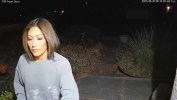
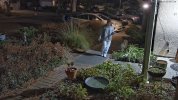
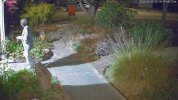
Thanks for the input, appreciate it. I'll be sure to read those pages tonight.Digital zoom only works in the movies. Sure you might get away with a little digital zoom in the day, but certainly not enough to make a difference and a digital zoom of an 8MP will not beat a 4MP optically zoomed for the same distance.
See this thread on the importance of focal length over MP.The Importance of Focal Length over MP in camera selection
At the urging of several folks here, I created a thread to show the importance of focal length and how focal length can be more important than megapixels (MP). I mentioned some of this in the post regarding The Hookup’s latest video demonstrating different cameras, including one sold from a...ipcamtalk.com
A ZE varifocal for LPR would need to be installed right at the street and a distance of no more than 30 feet. It likely wouldn't work installed on your house. You would need a higher optical zoom camera.
Personally I go with 3.6 over 2.8 in almost every situation.
This great thread shows why all of the same 2.8 or 3.6mm cameras is the wrong choice and how many of us over time optically zoom in more and most max out the varifocal over time and which they had more zoom LOL:
i-want-2-8mm-cameras-everywhere-to-see-everything-this-is-why-you-need-specific-fovs-with-purposeful-focal-lengths.70053/
Good to know for the LPR. I was worried it wouldn't work for our house already, no place for a good install that wasn't blocked or be blocked by a number of things. I'd put a house number sign and get the cam built-in next to the street but the snow plow would for sure rip it out first winter
I was looking at the vari-focal of the 4MP initially as some suggested to for figuring out the best focal length to get fixed. Then thought for the price difference maybe just do all vari BUT THEN I read that vari versions don't get as much light or something that would hinder the performance somewhat. No idea how true this is, just something I've read. And then I found the 8MP 4K and started to compare. And now, well here I am
That's why I use a IPC-T54IR-ZE-S3 (IPC-B5442E-S3) at my front door. Mounted at 5 feet. Lit by a porch light. Gain limited so that faces are properly exposed a few feet away. I want the best possible face image as someone approaches my front door.
Other cameras capture the overview and different angles. Multiple cameras for multiple uses. The PTZ is fixed at night and tracks during the day. Camera 133 is a Color4k-X-6mm.
View attachment 230820
View attachment 230822
View attachment 230823
Awesome.
It’s refreshing when you see folks who get that one camera can’t do it all and often you need dedicated cameras at choke points to get the real important shots
Oh, that's interesting!Does anyone use Video Surveillance Design Apps | JVSG ? found it during my search not sure how acurate it is. I think I picked the correct Dahua models for the IPC-T54IR-AS-S3 and IPC-Color4K-T
Lens Calculator
www.jvsg.com
First link has a typo in it (corrected):
Lens Calculator
CCTVCam
Known around here
- Sep 25, 2017
- 3,076
- 3,986
My understanding this is a strength of the 4K (8MP) more pixels allows you to zoom in a bit further. Does that sound accurate?
You'd think so but no, you won't be able to enlarge the picture very much before it loses definition. You've got the best chance on one of the variable aperture cameras as these can narrow the aperture when it's bright as an alternative to increasing the shutter speed (a balance is needed here). However, these are new out and non match the 4kt for light gathering ability at night yet. The best long range shots by the way are often captured b the use of PTZ's which often have as few as 2mp. There's a lot to be said to having the subject on the focal point and not before or behind. PTZ's bring their own focus & tracking issues though not to mention cost.
You'd think so but no, you won't be able to enlarge the picture very much before it loses definition. You've got the best chance on one of the variable aperture cameras as these can narrow the aperture when it's bright as an alternative to increasing the shutter speed (a balance is needed here). However, these are new out and non match the 4kt for light gathering ability at night yet. The best long range shots by the way are often captured b the use of PTZ's which often have as few as 2mp. There's a lot to be said to having the subject on the focal point and not before or behind. PTZ's bring their own focus & tracking issues though not to mention cost.
Although I agree with this normally, with these 8MP models certainly in daylight, setup with fast shutter, low or disabled NR for excellent quality, I find you can zoom in to 150% maybe even 200% and still get nice results. Yes, there is generally no substitute for correct focal length, but these 4K cameras gather light ridiculously well. With that said I do love my 2MP starlight PTZ's, they are certainly not cheap but so flexible, my experience has also been that the 'same' 2MP starlight in a PTZ somehow always produces better results than the 2MP bullet or turrets. But yes, these 4K cameras are hugely impressive, the biggest problem they create is that I have less desire to use any other type of camera now

With the 3.6mm bullet, what is the real world minimum focus distance as a rough guide. I have a distance to target of between 16-20 feet, am hoping the 3.6mm will work well for that. I have a couple of the 2.8mm turrets, the benefit of the close and near LED's on the bullet will be useful for me, are there any downsides for those who have both vs the turret?
You should be fine, 6-25ft is good on mine. I prefer the bullet
45ft to center of street
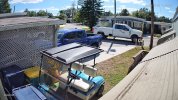
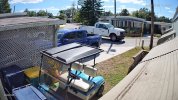
View attachment Home_ch1_20231020195951_20231020200005.mp4
View attachment Home_ch1_20230725222814_20230725222834.mp4
12ft
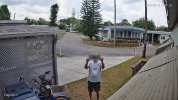
20ft
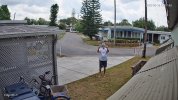
Where he steps onto the grass is 20-21ft
Back corner of cart is 12ft
Front bumper of cart/garbage can is 6ft
Rear of his truck about 30ft
View attachment 192.168.1.110_ch1_20251022144051_20251022144116.mp4
45ft to center of street


View attachment Home_ch1_20231020195951_20231020200005.mp4
View attachment Home_ch1_20230725222814_20230725222834.mp4
12ft

20ft

Where he steps onto the grass is 20-21ft
Back corner of cart is 12ft
Front bumper of cart/garbage can is 6ft
Rear of his truck about 30ft
View attachment 192.168.1.110_ch1_20251022144051_20251022144116.mp4
You should be fine, 6-25ft is good on mine. I prefer the bullet
45ft to center of street
View attachment 231070 View attachment 231071
View attachment 231065
View attachment 231066
12ft
View attachment 231067
20ft
View attachment 231068
Where he steps onto the grass is 20-21ft
Back corner of cart is 12ft
Front bumper of cart/garbage can is 6ft
Rear of his truck about 30ft
View attachment 231072
Wow, that is some reply, thank you kindly. I initially thought some of the properties in the background looked softer focus, but that is simply where the camera drops off after hitting optimum focal distance - these things are so damn sharp. Looks like I will be ordering a bullet or two in 3.6mm, loving these 4K series cameras, they are monsters in low light as well, these samples show all you need to know


Last edited:

